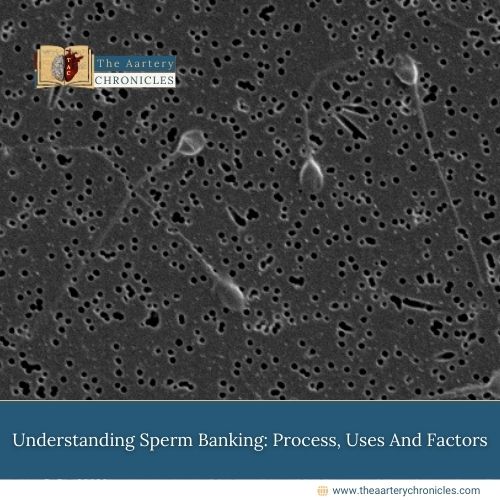

Understanding Sperm Banking: Process, Uses And Factors
Overview
Sperm banking involves collecting, freezing, and storage of sperm in a healthcare facility called a sperm bank. The process is also known as sperm cryopreservation or sperm freezing.
Stored sperm can be thawed and used in the future for several fertility procedures such as in vitro fertilization (IVF) or intrauterine insemination (IUI). Sperm banking also serves as a method to preserve male fertility.
Why do people bank sperms?
There are several reasons why people choose to bank their sperm, the common being the need for treatment of diseases such as cancer. Because after radiation or chemotherapy, there may be very few or no sperms left at all. Moreover, surgeries involving the removal of testicles such as orchiectomy mean sperm can no longer be produced.
Some other reasons may include:
- Medical Conditions or procedures: Individuals choosing to have vasectomy may want the alternative to have children later. Certain therapies or medications like sickle cell therapy or testosterone therapy can significantly affect fertility in males, hence freezing of sperm in such cases can be considered
- Posthumous sperm retrieval: Family members can opt for sperm to be collected from deceased individuals. These sperms can be extracted within 72 hours of death.
- Occupation: Individuals with high-risk jobs, for example, military, choose to bank sperms to make them available for partners.
- Age: The quality of sperm gets diminished with age hence people choose sperm banking if they are getting older to preserve fertility.
Sperm Donation
The demand for donated sperm has been increasing. Infertile couples may choose to undergo ART with the help of donated sperm.
- Sperm banks have several criteria and requirements. Becoming a sperm donor needs several health screenings and tests which are performed at the facility.
- Donated sperm is cryopreserved until requirement
- Majority of the time, the donor has the alternative of donating anonymously.
- Men can earn money by donating sperms

How does sperm banking work?
Increased advancements in technology have significantly enhanced the affordability and convenience of sperm banking.
Sperm Banking: Collection and Storage
- To initiate the process, a man visits a clinic to provide a semen sample. Alternatively, FDA-approved home kits can also be used to collect samples in the comfort of a home and sent to the lab within 24 hours for storage.
- Individuals with low sperm count or no sperm in the semen may need surgery to extract sperm
- After the collection of samples, they are analyzed to determine sperm count, mobility, and screenings for STDs and other infections.
- The samples are then transferred to vials and cryopreservative compounds are added to preserve their health during freezing.
- These vials are stored at temperatures below freezing (-196 centigrade) for long-term storage.
- Sperm banks on average can cost around a few hundred dollars per year.
Thawing
- When the time for using banked sperm comes, it is thawed in the laboratory until it reaches room temperature.
- After thawing, further analysis is carried out to ensure that there are significant active and motile sperm left.
- In some circumstances two-thirds or one-half of sperm may not survive the process of freezing and thawing hence the ones that do survive can be used. Moreover, studies suggest that these sperm are more likely to help achieve a pregnancy when they are used with IVF treatments.
Advantages of Sperm banking
- Preserving fertility: When medical treatments or other biological factors cause fertility, banking sperms can help preserve fertility and offer a chance at having biological children later
- Safety: Pregnancy conceived through cryopreserved sperm is just as healthy as that conceived through sexual intercourse.
- Longevity: With proper storage, the samples do not deteriorate even after long-term deep freezing.
Risks or complications of Sperm banking
Sperm banking is usually a safe and effective method for preserving fertility, however, there are potential risks and complications.
1.Difficulty in Sample collection: Ejaculation failure
Certain conditions may hinder or prevent the collection of high-quality semen samples through masturbation, posing challenges for sperm banking such as
- Delayed ejaculation
- Erectile dysfunction (ED)
- Anejaculation
- In such cases experts may suggest surgical retrieval of sperm cells, some methods include:
- Needle aspiration biopsy (NAB)
- Percutaneous epididymal sperm aspiration (PESA)
- Microscopic testicular sperm extraction (TESE)
2. Inherited disorders
Individuals who opt for sperm banking due to a cancer diagnosis may have concerns about the potential genetic risks to future biological children, as some types of cancer can be hereditary.
- In such cases, genetic counselors can provide valuable guidance on the risks of passing on inherited conditions.
- These experts can assess whether the cancer is of a hereditary type and offer advice on family planning and genetic testing to help individuals make informed decisions.





